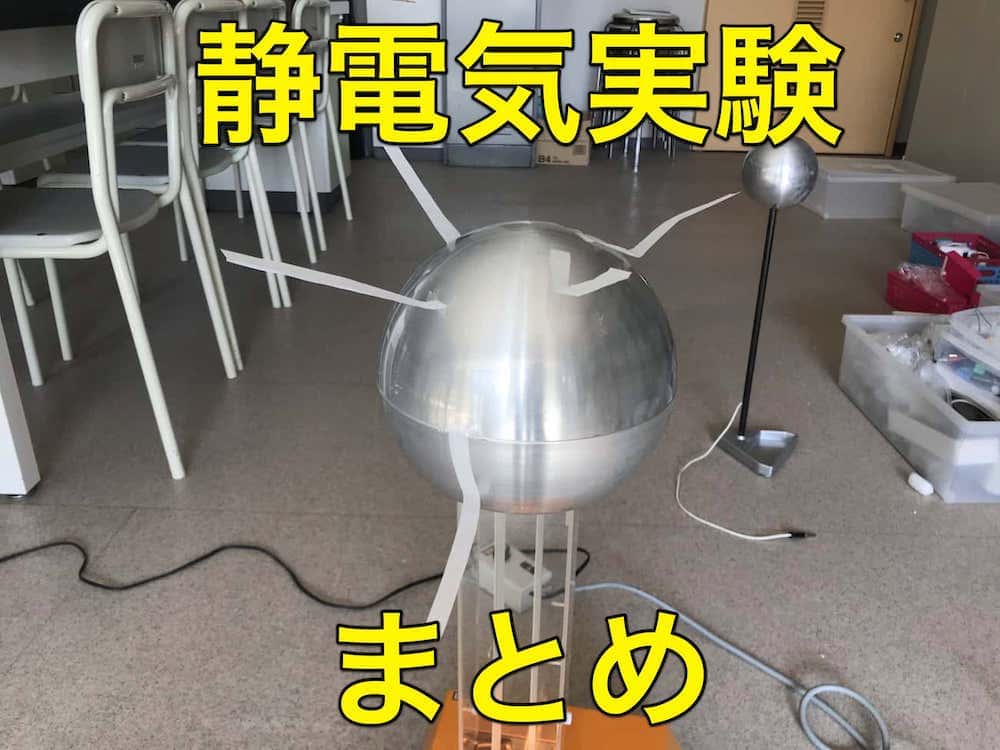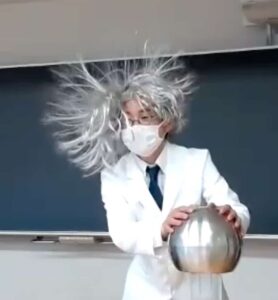Beyond Pikachu’s Shock! Experience 150,000 Volts of Static Electricity with a Van de Graaff
I’m Ken Kuwako, the Science Trainer! Let’s have fun with science together on this site.
Have you ever touched a doorknob on a dry winter day and had a “ZAP!” with a spark flying, making you involuntarily yelp? That small, but definitely painful, “static electricity.” Did you know that this phenomenon has a surprising connection to a special move of a certain character we all know and love?
That’s right, it’s Pikachu’s “Thunderbolt” ⚡ from Pokémon!
What if that little “ZAP!” from the doorknob held more power than Pikachu’s move? Today, I’ll take you on a thrilling and slightly painful (lol) journey into the deep and magnificent world of static electricity!
More than Pikachu!? The Shock of 150,000 Volts ⚡
The Static Electricity Generator! The Van de Graaff!
Pikachu’s “100,000 Volts” move is famous, but the Van de Graaff static electricity generator made by NALIC can produce a maximum of 150,000 volts! That’s right, it surpasses Pikachu!
So what do you think would happen if you turn on a Van de Graaff generator and move your hand close to it? A visible bolt of lightning will actually jump to your fingertip from as far as 10 cm away. I’ve captured this powerful moment in a video, so please take a look.
I actually did this experiment with actress Suzu Hirose on a TV show. Ms. Hirose gently moved her hand close to the Van de Graaff and experienced the discharge. (A little trick is to have them face the back of their hand toward it, as it makes it easier for sparks to fly!) For more details, please click here.
Why Does It Hurt? The True Identity of the Static Electricity “ZAP!”
I tried to turn the switch off, and something even more amazing happened!?
At the moment of discharge, the negative electricity stored in the Van de Graaff generator flows all at once through your hand to your foot, causing a sharp, painful sensation. But why is it “painful”?
Our bodies normally use weak electrical signals to move our muscles. The command from our brain to “move your arm!” is also an electrical signal that travels through nerves to our muscles. When a strong electric current from something like a Van de Graaff suddenly flows into our bodies, our muscles get startled and contract involuntarily. This sudden muscle contraction is the true identity of that “jolt” and the unpleasant “pain.”


When I actually captured the light, this is what the beautiful (?) bolt of lightning looked like.
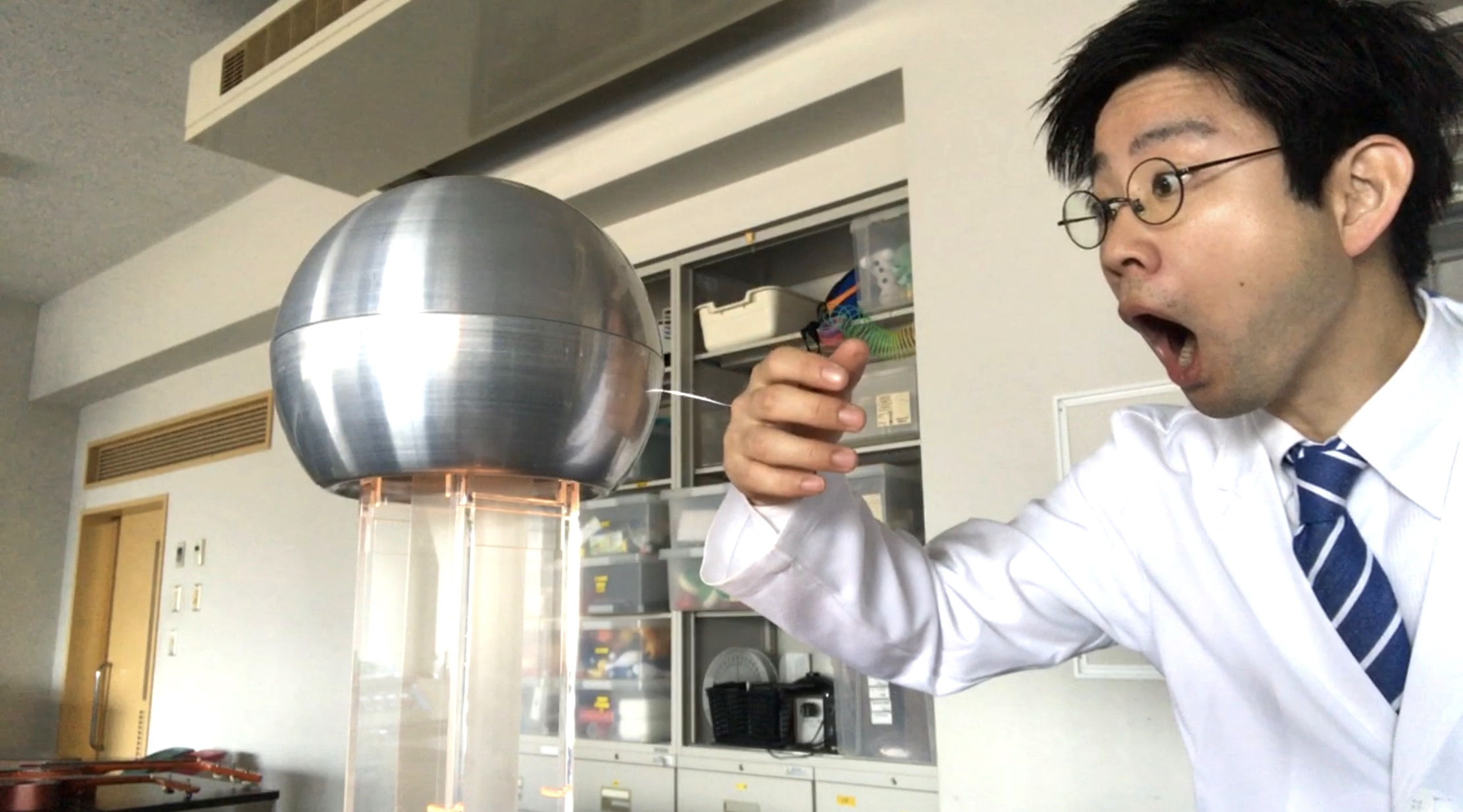
By the way, after this, when I tried to turn the switch off to end the experiment, I got a fierce “ZAP!” again! It seems electricity was also stored in the metal part of the switch… Oh well. The fun of science sometimes shows its fangs in unexpected ways (lol).
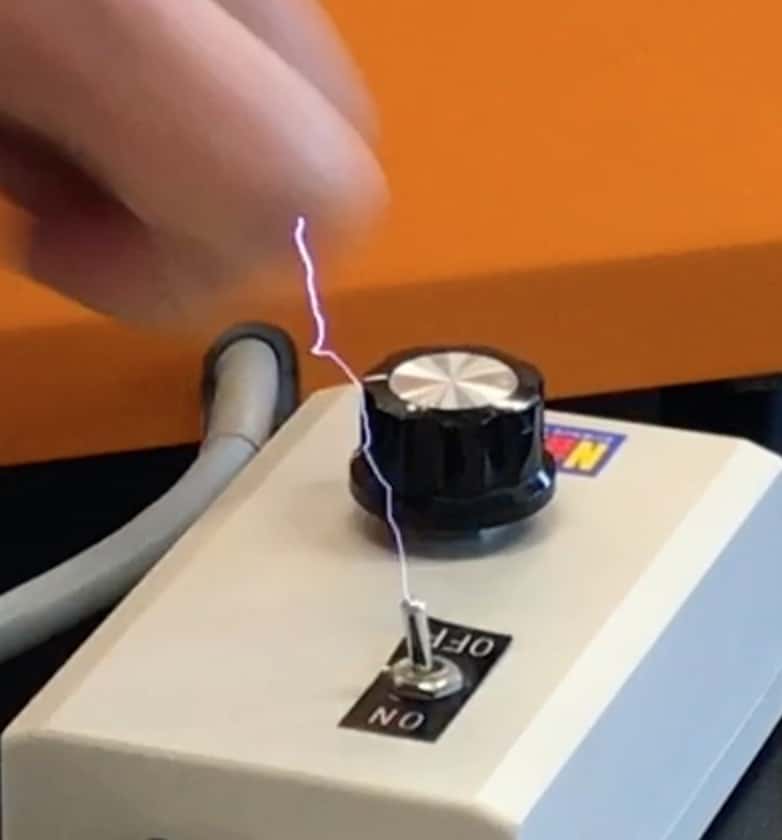
【A Scientific Look】 Can Pikachu’s 100,000 Volts Really Reach its Target?
How far can Pikachu’s 100,000 Volts discharge?
Now, here’s a question. How far can Pikachu’s “Thunderbolt” really reach?
In the real world, it takes a tremendous amount of energy for electricity to fly through the air (discharge). As a guideline, it’s said that about 30,000 volts are needed to discharge 1 cm in the air.
Based on this, our Van de Graaff’s 150,000 volts can only discharge about 5 cm. It seems physically quite difficult for a shock to travel a long distance to an opponent, as it does in the anime. If Pikachu followed the laws of physics, the move might not hit unless he gets close enough to touch the opponent. In that case, maybe a punch would be faster…?
However, we must not forget the existence of “current.”
Voltage is often compared to “the force that pushes electricity (the height of a waterfall),” and current is “the amount of flowing electricity (the volume of water in a waterfall).”
With static electricity, the voltage is very high (the waterfall is high), but the current is extremely small (the water trickles), which is why we only feel a tingle. However, the electricity from a household outlet has a low voltage of 100 volts, but a large current, which makes it very dangerous. Perhaps what makes Pikachu’s move truly frightening is the magnitude of its “current.”
The Mysterious Connection Between Laboratory Sparks and the “Lightning” in the Sky
The mystery of spark discharge and lightning
The spark discharge shown by the Van de Graaff. An induction coil allows us to observe this small bolt of lightning more continuously.
Spark discharge in a laboratory requires a very strong electric field of 3 million volts per meter. However, it’s thought that natural “lightning” occurs with a much weaker electric field of about 200,000 volts per meter.
Why can lightning discharge so “efficiently”?
This mystery has not yet been fully explained scientifically. However, one leading theory is that “cosmic rays” flying from the far reaches of space are involved. It is thought that invisible, tiny cosmic rays collide with air molecules and ionize them, creating a “path” for electricity to flow, which makes it easier for lightning to occur at a much lower voltage than it normally would.
Isn’t it exciting that a story that started with a small spark from a doorknob can lead to a magnificent story about the universe?
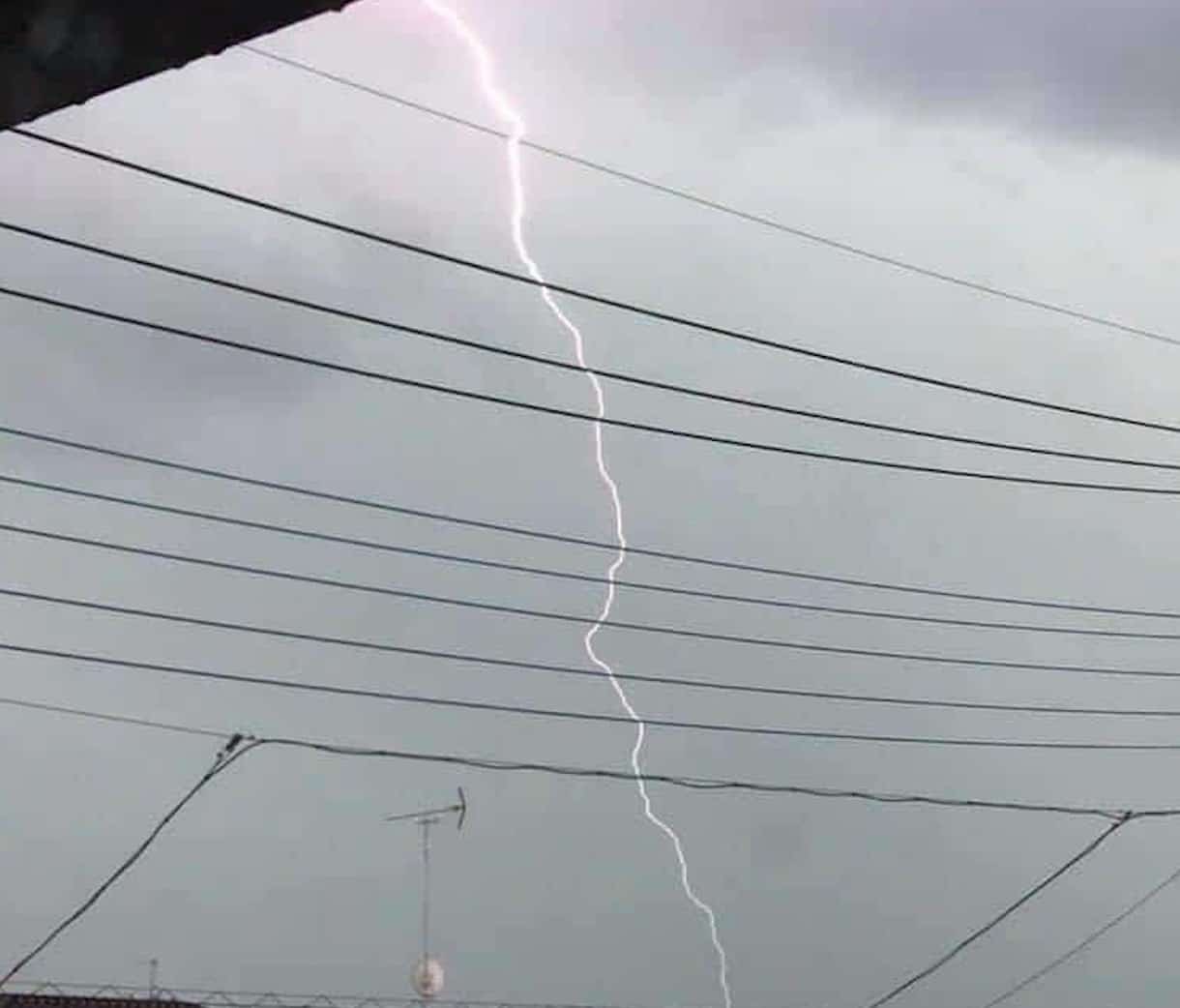
By the way, the energy of real lightning is on a completely different scale. According to Wikipedia, the voltage during a lightning strike can reach 2 million to 1 billion volts, and the current can reach 1,000 to 500,000 amperes. It’s truly a cataclysmic level of energy that makes Pikachu’s 100,000 volts look adorable!
Have More Fun with Static Electricity!
If you use a static electricity generator (Van de Graaff), you can do these other fun experiments!
Besides what I introduced today, you can do many other fun experiments with a Van de Graaff. You can make your hair stand on end, light up a fluorescent bulb, and more! I did some of these experiments on TV shows with many famous personalities, including Suzu Hirose, Ryohei Suzuki, Yasuko, and the duo from Chocolate Planet. Please check here for more details.

※ Experiments using a static electricity generator (Van de Graaff) must be conducted with the supervision of a specialist. Please try it with caution. For inquiries about static electricity experiments (workshops, TV supervision, appearances, etc.), please click here.
【Special Feature】You won’t be able to stop! The World of Static Electricity Experiments
Inquiries and Requests
I want to make the wonder and fun of science more accessible! I’ve put together fun science experiments you can do at home and easy-to-understand tips for them. Please search for various things!
・About the operator, Ken Kuwako, click here
・For various requests (writing, lectures, science workshops, TV supervision, appearances, etc.), click here
・Article updates are distributed on X!
![]() The Scienceネタチャンネル is distributing experiment videos!
The Scienceネタチャンネル is distributing experiment videos!


